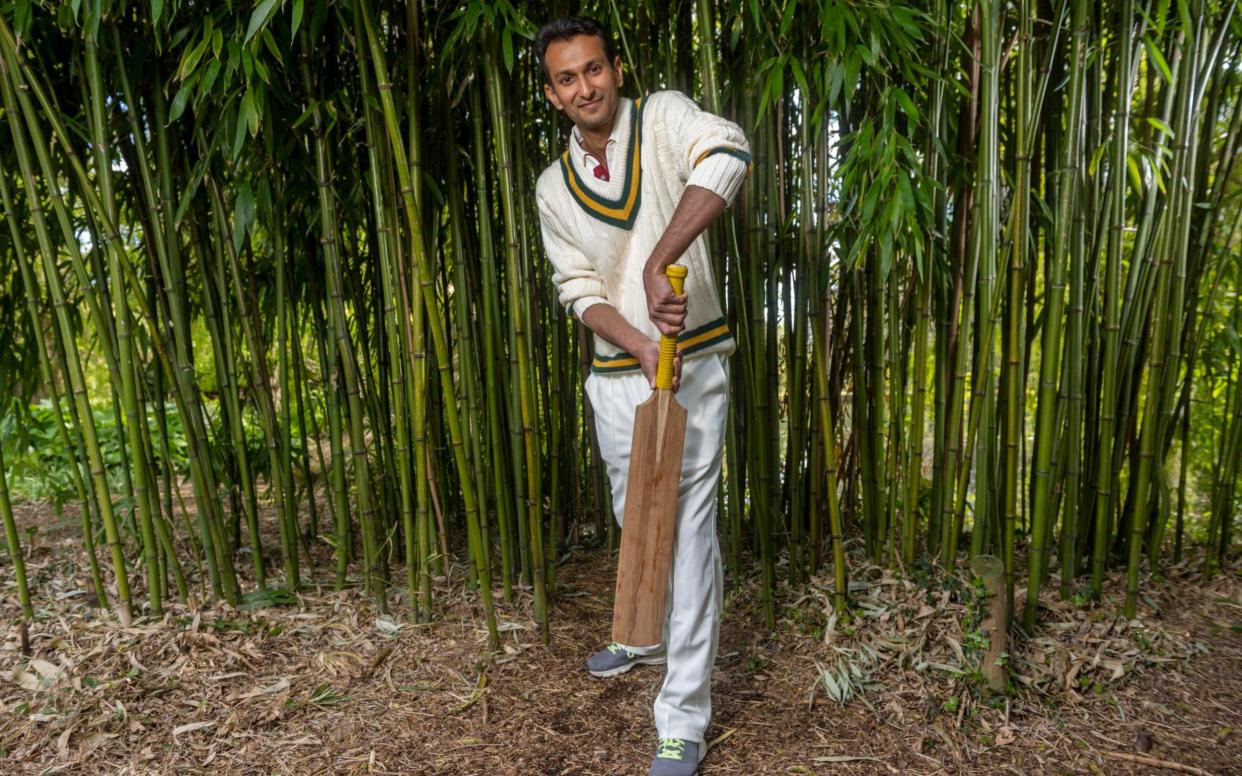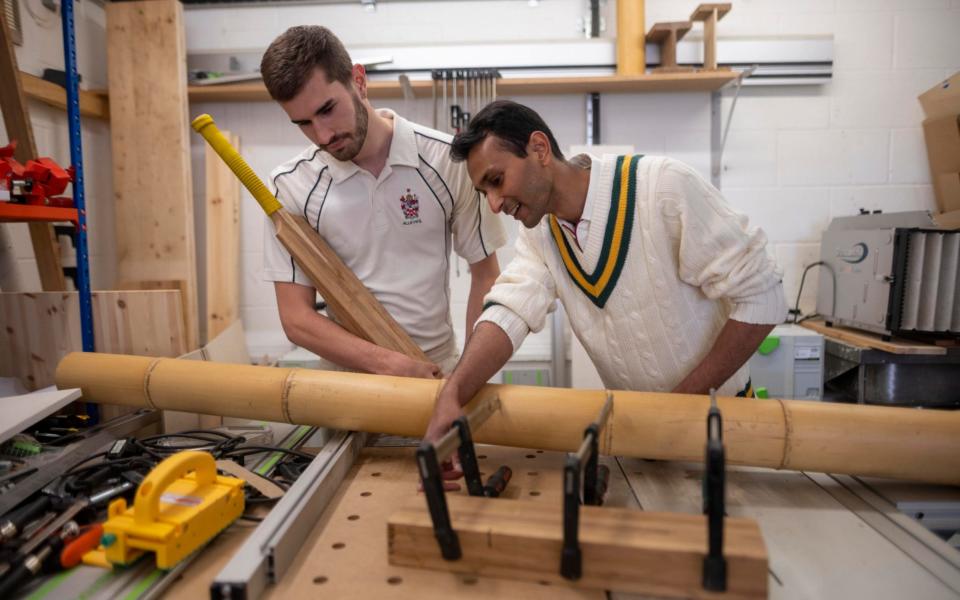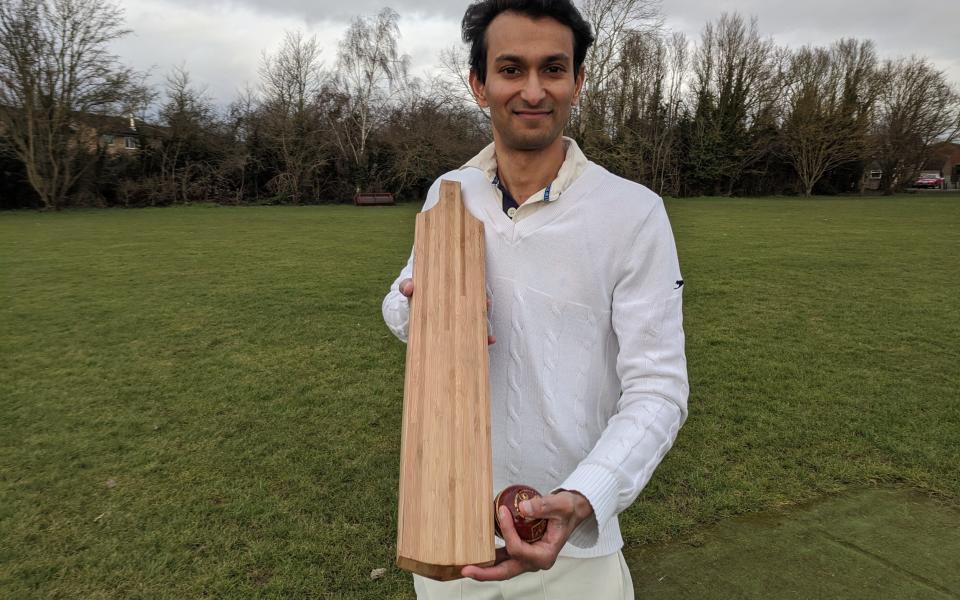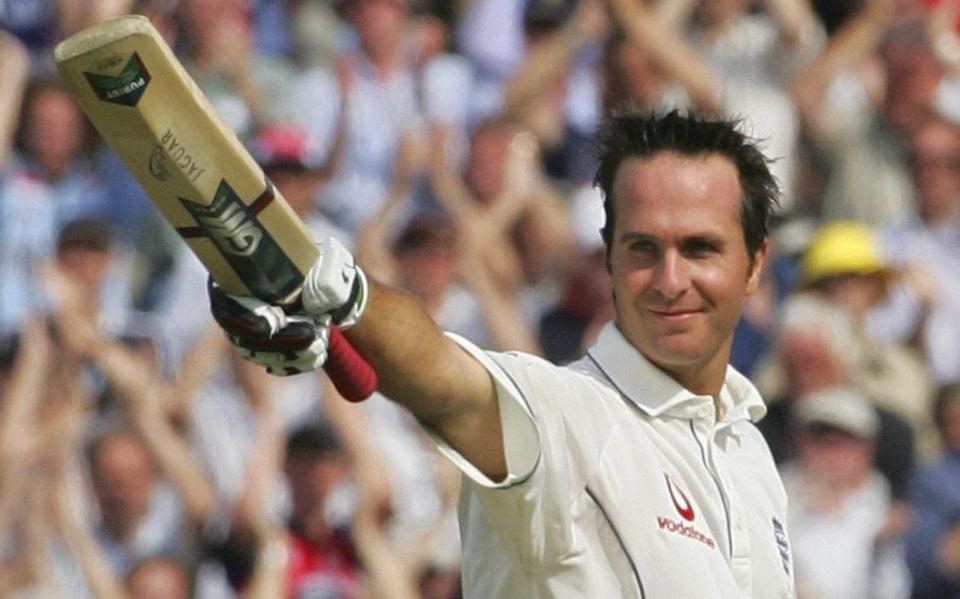Forget the thwack of leather on willow, bamboo could make the best cricket bat

Few sounds signal the arrival of English springtime quite like the thwack of leather on willow as the cricket season gets under way.
But in a development destined to send shudders through the nation’s pavilions, Cambridge University has suggested that actually cricket bats should be made of bamboo.
According to researchers at the Centre for Natural Material Innovation, bamboo cricket bats would be lighter, stronger and offer a larger ‘sweet spot’ - the point from which the ball achieves maximum acceleration.
Dr Darshil Shah, a former member of Thailand’s under-19 national cricket team, and Cambridge researcher, said: “The sweet-spot on a bamboo bat makes it much easier to hit a four off a Yorker for starters, but it’s exciting for all kinds of strokes. This is a batsman’s dream.”
English willow has been the traditional choice for bats for more than 200 years, because it has porous, criss-crossing fibres, which give it strength, while also holding air pockets that deform when hit to increase resilience and lessen vibrations.
Makers originally used the sturdy willow heartwood, but had switched to the sapwood by the end of the 19th century to make the bats lighter.
When researchers at Cambridge tested bamboo prototype bats, they found they were twice as strong as willow, meaning they could be thinner and lighter. They also found bamboo is 22 per cent stiffer than willow, which increases the speed the ball leaves the bat.
And they discovered the sweet-spot is about 2cm by 4cm, significantly larger than on a typical willow bat, and positioned closer to the toe, making Yorkers landing close to the feet easier to hit accurately.
Bamboo was also shown to have a similar ‘damping ratio’ to willow - meaning that a similar amount of force is transferred to a player’s hands when they strike the ball, so players would feel no more vibration.



Yet there are concerns that making life easier for batsmen would disadvantage bowlers.
Michael Vaughan, the former England Captain, told the Telegraph that the Marylebone Cricket Club (MCC) would have to be sure that it would not give batsmen an unfair advantage over bowlers before allowing bamboo bats.
And there would need to be a regulation change, as currently under MCC rules cricket bats must be made from wood, and bamboo is a grass.
The debate around being able to hit the ball further echoes concerns seen in other sports such as golf and baseball, where technological advances have led to fears that some courses and stadiums are no longer big enough to accommodate events.
Dr Shah added: “There would need to be discussions with the MCC but we think playing with a bamboo bat would be within the spirit of the game because it's a plant-based material and cane, a type of grass, is already used in the handle.”
The study points out that there is a shortage of good-quality willow, which takes up to 15 years to mature – mostly in England – to the point where the wood can be used to make cricket bats.
By contrast, Moso and Guadua, the two most suitable types of structural bamboo, grow abundantly in China, across South-east Asia and South America, and mature twice as fast as willow.
But what about the much-loved sound of leather on willow?
“We tested that too”, said co-author, Ben Tinkler-Davies. “The frequency when willow strikes the ball is very similar – whether you’re playing or spectating, you wouldn’t notice much of a difference.”
And for those people still left feeling that a bamboo bat is ‘just not cricket’, Dr Shah added: “Tradition is really important but think about how much cricket bats, pads, gloves and helmets have already evolved.
“The width and thickness of bats have changed dramatically over the decades. So if we can go back to having thinner blades but made from bamboo, while improving performance, outreach and sustainability, then why not?”
The only current downside is the weight. The prototype bat is still 40 per cent heavier than a traditional willow design, and the researchers are now working on making their version lighter.
The findings were published in The Journal of Sports Engineering and Technology.
Michael Vaughan: The relationship between batsman and bat is special
I look forward to the first batsman to walk out at Lord’s carrying a bamboo bat. The game is constantly evolving so why not make cricket bats out of bamboo if it is better for the environment?
Bats are expensive pieces of kit these days so perhaps it would also make the game more accessible if they were cheaper and last longer. But I would hope change does not come at the expense of some great batmakers like Gunn & Moore, who made my bats throughout my career. They are craftsmen.
It is a real skill to make a cricket bat. As a batsman, your bat is special. It is an extension of yourself. You take time to get to know the feel, the weight and the characteristics of your bat. It is a close relationship.

In my time, a batsman would be heartbroken when a favourite bat broke. It would take a long time to build up trust in your next one and you may feel you will never replace it.
But these days technology has moved on. Bat manufacturers can replicate bats exactly so when a modern player finds a bat he likes, the batmaker has a machine that can produce exact copies.
Players are less bothered when a bat breaks because they know they have four or five exact replicas in their kit bag. The MCC would have to approve the change but I’m sure they would look at sustainability as a good thing. But at the same time they have to be vigilant about the balance between bat and ball.
Technology has changed all sports. Just look at modern golf clubs. But in cricket bats have become bigger over time and mis-hits can go for six.
I’ve got one of Mike Atherton’s bats from the 1990s and it is a toothpick compared to Kevin Pietersen’s 10 years later. The MCC would have to be very careful that a bamboo bat does not give batsmen another unfair advantage over bowlers.
I would be interested to know who has tested the prototypes. It needs a top professional to use one, and give a real insight on whether it makes any difference.

 Yahoo News
Yahoo News 
